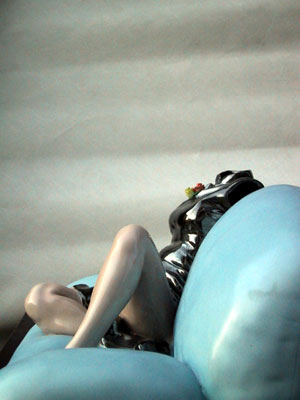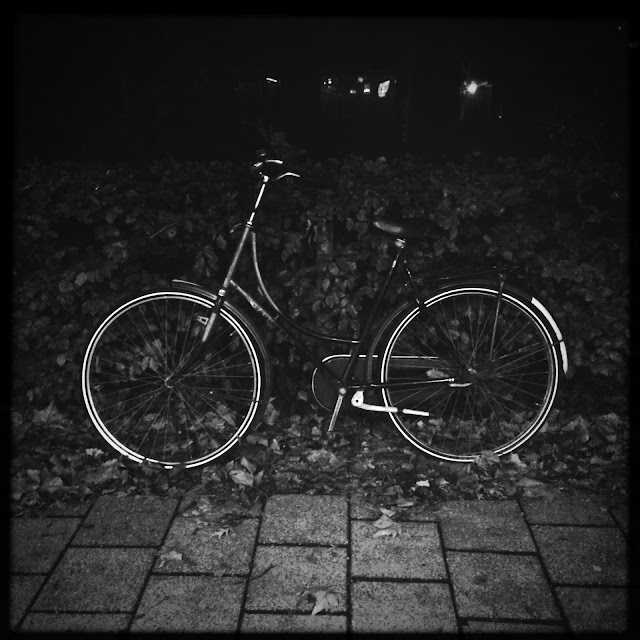Via: ShanghART
10 oktober 2017
Hipstamatic: Franklin + Big Up
Van die pret-frames krijg je al snel genoeg. Of laten we zeggen dat niet iedereen tot de doelgroep van Big Up behoort.
Labels:
Big Up,
Franklin,
Hipstamatic,
iPhone 5s
Pourquoi Pas ?
Front page of the journal Pourquoi Pas ?, 15 July 1960.
NAB, Papers Ernest Glinne, box 5.
Via: Archives I Presume? > Belgium 75 years in Central Africa > The failing model colony
Traces of a colonial past in the State Archives
NAB, Papers Ernest Glinne, box 5.
Via: Archives I Presume? > Belgium 75 years in Central Africa > The failing model colony
Traces of a colonial past in the State Archives
Mogadiscio - Torre Amnara
“Mogadiscio – Torre Amnara”
Via: Mogadishu: Images from the Past: cartographic and photographic record of Mogadishu, Somalia, from the late 18th century to 1990. This page has been created and maintained by Rick Davies (Ph.D.), a resident of the city in the 1980s. Photographs, drawings, maps with commentary and background. Dr. Davies, an Australian, is a Monitoring and Evaluation consultant in Cambridge, U.K.
Via: Mogadishu: Images from the Past: cartographic and photographic record of Mogadishu, Somalia, from the late 18th century to 1990. This page has been created and maintained by Rick Davies (Ph.D.), a resident of the city in the 1980s. Photographs, drawings, maps with commentary and background. Dr. Davies, an Australian, is a Monitoring and Evaluation consultant in Cambridge, U.K.
Scarification designs, Congo, ca. 1900-1915
Scarification designs, Congo, ca. 1900-1915
Black and white lantern slide showing a Congolese man with designs made on his face through the process of scarification. Throughout Africa, flat and raised scars were used on the skin in often geometric designs as a form of body modification that reflected life stages, ethnic belonging, a form of enhancing beauty or a test of endurance. The raised scars pictured were probably made by raising skin with a tool and then slicing it with a blade, after which the healing process would be controlled to form the desired shape. The Congo had some of the most intricate scarification designs in Africa, particularly amongst women. For men, scarification was often a sign of endurance and suitability for the battle field. The Tabwa and Luba Bantu-speaking people in the Congo practised scarification. The Tabwa people's philosophy was based on duality, and geometric, symmetrical scarification designs reflected this. Scarification amongst the Luba people was made up of different shapes which, when combined in different ways, created different meanings. Through scarification, meaning is invested in the body thus preserving cultural memory. This slide comes from a collection generated by missionaries working for the Congo Balolo Mission, a mission begun in 1889 under the supervision of the East London Training Institute for Home and Foreign Missions that developed into the interdenominational evangelical mission Regions Beyond Missionary Union after 1900.
Subject (corporate name): Congo Balolo Mission
Coverage date: 1900/1915
Photographer: Unknown
Publisher (of the digital version): University of Southern California. Libraries
Part of collection: International Mission Photography Archive, ca.1860-ca.1960
Part of subcollection: Photographs from the Centre for the Study of World Christianity, University of Edinburgh, U.K., ca.1900-ca.1940s
Black and white lantern slide showing a Congolese man with designs made on his face through the process of scarification. Throughout Africa, flat and raised scars were used on the skin in often geometric designs as a form of body modification that reflected life stages, ethnic belonging, a form of enhancing beauty or a test of endurance. The raised scars pictured were probably made by raising skin with a tool and then slicing it with a blade, after which the healing process would be controlled to form the desired shape. The Congo had some of the most intricate scarification designs in Africa, particularly amongst women. For men, scarification was often a sign of endurance and suitability for the battle field. The Tabwa and Luba Bantu-speaking people in the Congo practised scarification. The Tabwa people's philosophy was based on duality, and geometric, symmetrical scarification designs reflected this. Scarification amongst the Luba people was made up of different shapes which, when combined in different ways, created different meanings. Through scarification, meaning is invested in the body thus preserving cultural memory. This slide comes from a collection generated by missionaries working for the Congo Balolo Mission, a mission begun in 1889 under the supervision of the East London Training Institute for Home and Foreign Missions that developed into the interdenominational evangelical mission Regions Beyond Missionary Union after 1900.
Subject (corporate name): Congo Balolo Mission
Coverage date: 1900/1915
Photographer: Unknown
Publisher (of the digital version): University of Southern California. Libraries
Part of collection: International Mission Photography Archive, ca.1860-ca.1960
Part of subcollection: Photographs from the Centre for the Study of World Christianity, University of Edinburgh, U.K., ca.1900-ca.1940s
Labels:
Congo,
fotografie,
geschiedenis,
Kongo
The big zeppelin that is used for baby-killing
Daily Sketch, Number 1944, June 2, 1915
World Digital Library:
“The Daily Sketch was a British tabloid newspaper, established in Manchester in 1909 by Sir Edward Hulton (1869–1925), one of the leading newspaper proprietors of his era. Hulton soon moved the paper to London, where it competed with the other leading British tabloid, the Daily Mirror. Like his father Edward Hulton (died 1904), Hulton was an astute entrepreneur who regarded newspaper publishing as primarily a commercial enterprise. He and his editors attracted a large readership by offering human interest news stories, news about sports, serialized stories, competitions in which readers could win prizes, and other features that entertained as much as they informed. Hulton early recognized the possibilities of picture journalism, and the front and back pages of the Daily Sketch always were given over completely to photographs. Many people in Britain came to see World War I through the prism of the newspaper, which devoted extensive coverage to the war. Presented here are 144 issues of the Daily Sketch from April 9, 1915, to May 31, 1916. Each issue generally contained news about the battles on the Western Front and other theaters of the war, with much attention paid to the wounded and to war heroes; information about the activities of the British royal family and other notables; news about the home front; features about women and families; short articles on political and social issues; cartoons; serialized stories; and advertisements. The issues generally ran to 12 pages.”
World Digital Library:
“The Daily Sketch was a British tabloid newspaper, established in Manchester in 1909 by Sir Edward Hulton (1869–1925), one of the leading newspaper proprietors of his era. Hulton soon moved the paper to London, where it competed with the other leading British tabloid, the Daily Mirror. Like his father Edward Hulton (died 1904), Hulton was an astute entrepreneur who regarded newspaper publishing as primarily a commercial enterprise. He and his editors attracted a large readership by offering human interest news stories, news about sports, serialized stories, competitions in which readers could win prizes, and other features that entertained as much as they informed. Hulton early recognized the possibilities of picture journalism, and the front and back pages of the Daily Sketch always were given over completely to photographs. Many people in Britain came to see World War I through the prism of the newspaper, which devoted extensive coverage to the war. Presented here are 144 issues of the Daily Sketch from April 9, 1915, to May 31, 1916. Each issue generally contained news about the battles on the Western Front and other theaters of the war, with much attention paid to the wounded and to war heroes; information about the activities of the British royal family and other notables; news about the home front; features about women and families; short articles on political and social issues; cartoons; serialized stories; and advertisements. The issues generally ran to 12 pages.”
Abonneren op:
Reacties (Atom)


















